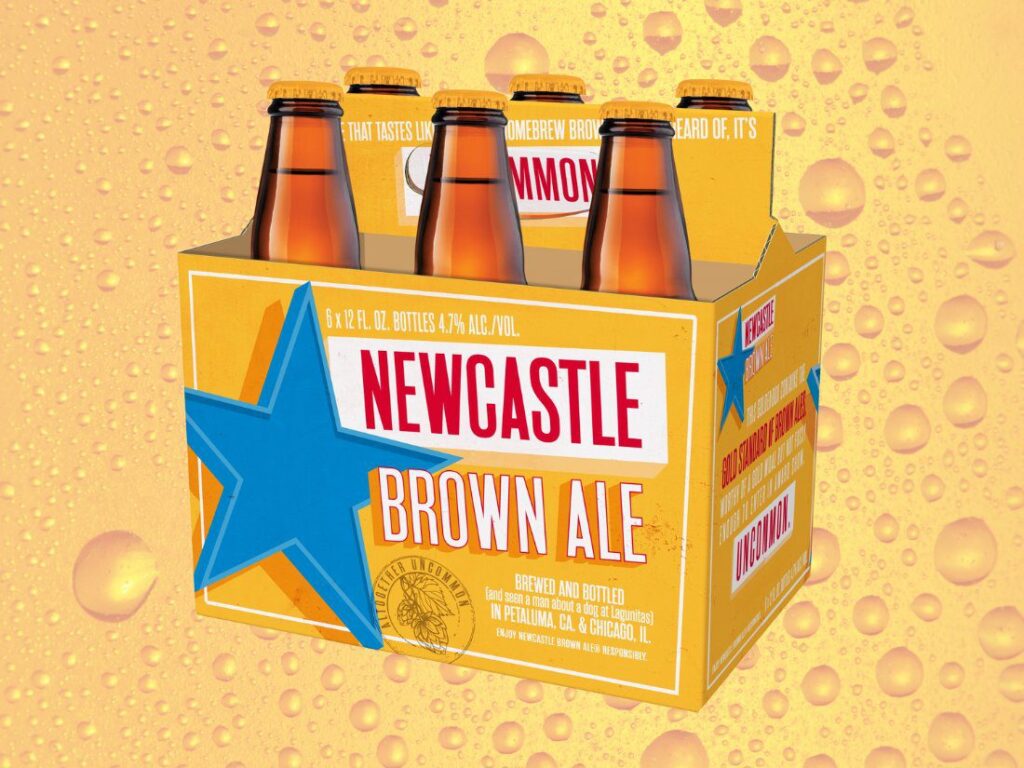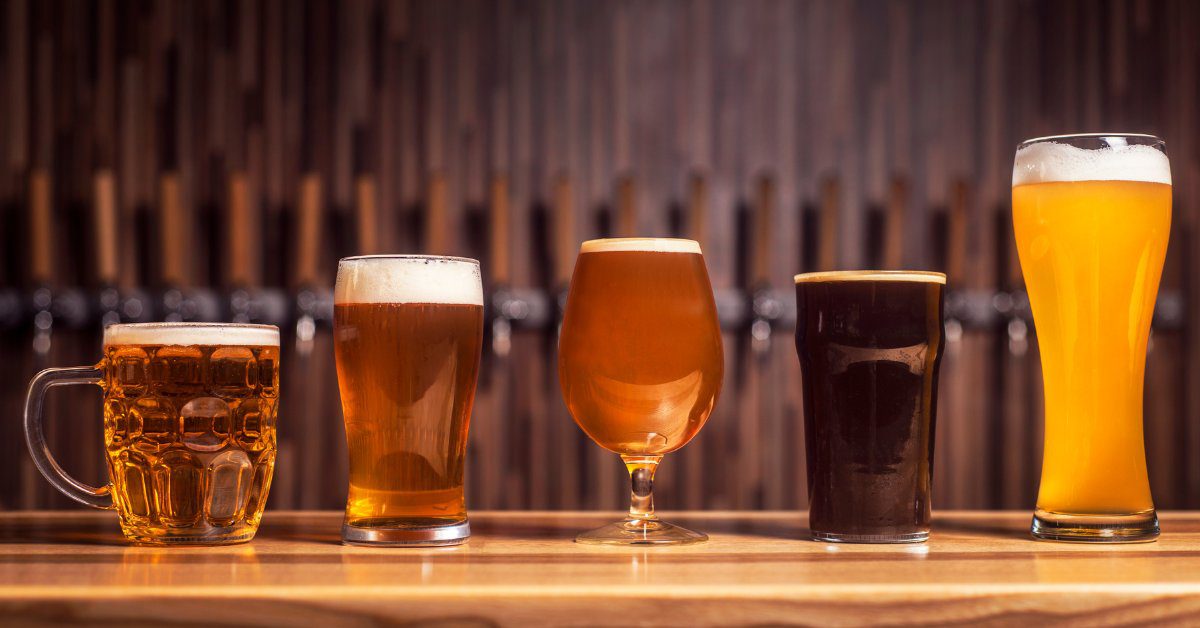Ales, one of the oldest types of beer, offers a rich tapestry of tastes for every palate, from the casual drinker to the seasoned connoisseur. This beginner’s guide aims to navigate you through the diverse landscape of ale styles, ensuring you have a foundational understanding of what makes each style unique and how to best enjoy them.
When I began researching this article, I found nineteen styles of ale, three of which had three or more subcategories.
That being the case, I could write a book devoted to the world’s ale styles. Since we won’t have that kind of time, I’ve elected to introduce you to some of the most common styles of ale.
Also Read
First, I’ll give you the difference between ale and lager.
Ale and lager are fermented by different strains of yeast. Ale is fermented at relatively warm temperatures (50F) by top-fermenting yeasts. The result is usually more full-bodied but with a noticeable sweetness in flavor. Lager, on the other hand, lacks this sweetness, achieving, instead, more of a crisp, dry finish.
1) English Brown Ale
Probably the most famous of the ales, English brown ale enjoys two variations.
In the south, you’ll find an ale similar to English mild with its flavors of malt and caramel. Bitterness is subdued, leaving plenty of room for the malt, a softly rounded mouthfeel, and fruit esters in the nose. In the north, brown ales are bigger, clocking in at 5% abv. These ales are light brown in color with a maltier aroma, flavors of nuts, and a more bitter finish.
Either variant, when done right, is the perfect place to start your ale journey.
As for which brands to try? Newcastle Brown, Hobgoblin, and Samuel Smith’s Nut Brown Ale are the way to go.

2) Mild Ale
England’s Midlands is the home of mild ale. An offshoot of London brown, mild ale is lower in alcohol than its relatives, coming in not much more than 3% abv.
Mild ales tend to be dark brown in color. Designed to be a session ale, mild ales enjoy the slightly sweet, rounded flavor of caramel and chocolate, a clean finish, and subdued hop bitterness.
Today, mild ale is the perfect pint to go with lunch on a busy day. If you can find them, try Highgate Mild or Gale’s Festival Mild.
3) Bitter
Another low-alcohol session beer, bitter, is one of Britain’s most popular ales and is traditionally served on tap. Beyond that, English Bitter is very hard to quantify, so we’ll settle for the broad strokes.
Bitter is an amber-colored ale, sometimes slightly reddish. It ranges from 3.5-5.5% abv with a noticeable hop aroma. Bitter will usually present a slightly malty sweetness with notes of caramel. It will then finish dry, accentuating a crisp bitterness that could range anywhere from mild to bracing.
Bitter can be hard to find here, but Fuller’s London Pride is worth the search. As are Old Speckled Hen and Young’s Ramrod.
4) India Pale Ale
An ale that amounts to being English Bitter’s big brother, India Pale Ale, is the next logical step in our list. And IPA is bigger than bitter in every respect.
India pale ale will be amber in color with pronounced flavors of malt and fruit esters. Alcohol will come in at 6-7% abv, and bitterness will be pronounced. A good Indian pale ale will be made with hard water, giving this ale a crisp, mineral profile that marries beautifully into its bitter finish.
If you want to enjoy a great IPA, look for Young’s London Ale, Samuel Smith’s India Ale, or Belhaven’s Twisted Thistle.
5) Barleywine
Barley wine is the heavy hitter of British ale, closing in anywhere from 8.5 to 14% alcohol. Done properly, barley wine is a great big ale with complex flavors rivaling the best-fortified wines.
Barley wine ranges in color from golden to mahogany. These ales are very full-bodied with lots of malt, toffee, dark fruit, and sherry-like flavors mingling together in the glass. You’ll notice a subdued aroma, some hop bitterness, and an alcoholic warmth reminiscent of port or sherry. Let a barley wine age for a few years, and everything becomes mellow, subdued, and even more subtly complex.
Fuller’s Vintage ale is widely available here and ages well. Anchor Old Foghorn and Sierra Nevada Barley Wine Style Ale are also worth looking up.
6) Porter
For an ale of only moderate alcohol, a good porter is amazingly rich, flavorful, and complex.
If you pour yourself a porter for the first time, it will remind you of stout. Most porters are dark brown with hints of ruby. Porter is amazingly drinkable, given its complexity. Drinking it, you’d enjoy a malty, chocolate sweetness balanced by a pronounced bitterness. Unlike other ales that get their bitterness from hops, Porter gets a roasted, coffee-like bitterness from dark, roasted grains.
Fuller’s London Porter is a great first porter to try. From there, you might try Portland, Maine’s Geary’s London Porter.
7) Stout
Thanks to Guinness, stout is available all over the world.
Stout came into the world as Porter’s big brother. When Guinness started brewing stout, it was marketed as a stout porter. Eventually, the porter was dropped, and it was marketed as stout.
Today, stout is remarkably light in alcohol for such a sturdy ale, coming in under 5% abv. Irish stout is pitch black with a thick, sweet mouthfeel and a sturdy white head. Stout’s bone-dry finish combines with hop bitterness and a subtle bitterness from roasted grains, giving it a roasted coffee finish. Today, there are many types of stout in the world, ranging from Irish to Imperial. Unfortunately, we don’t have time for them here.
Looking for a good stout? Try Guinness, Beamish, or Murphy’s Irish stouts. All are worth the effort.
Tasting and Enjoying Ales
Experiencing the full range of what ales have to offer involves more than just drinking. It’s about tasting. Here are a few tips to enhance your ale-tasting journey:
- Serve at the Right Temperature: Ales reveal their true character when served at the proper temperature, generally between 45°F and 55°F (7°C and 13°C). It’s too cold, and you’ll miss out on the nuances of flavor and aroma.
- Choose the Right Glassware: Different styles of ales flourish in specific types of glasses, which can enhance their aromatics and taste. For example, IPAs are best served in glasses with a wide bowl to showcase their hoppy bouquet.
- Pair with Food: Ales are incredibly food-friendly. Experiment with pairings to discover how different styles complement or contrast with various cuisines. Pale ales pair well with burgers and fried foods, while stouts can enhance the flavors of chocolate desserts.
The world of ales is vast and filled with discovery. Each style, with its unique history, brewing technique, and flavor profile, offers a new adventure. As you explore, remember that the joy of beer is in the experience—sharing with friends, pairing with food, and finding your personal favorites.
Beginners should feel encouraged to try a wide range of styles, attend beer tastings, and even explore homebrewing. With each sip, you’ll gain a deeper appreciation for the art and science of brewing and the endless creativity that defines the ale tradition.
In conclusion, ales provide a rich, diverse canvas for both brewers and drinkers. From the hoppy heights of an IPA to the malty depths of a stout, there’s an ale out there for every taste and occasion. So, raise a glass to the ale adventure ahead—it’s sure to be a flavorful journey.













